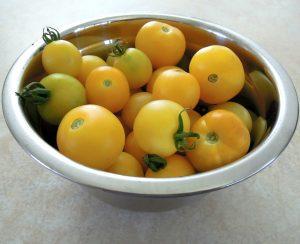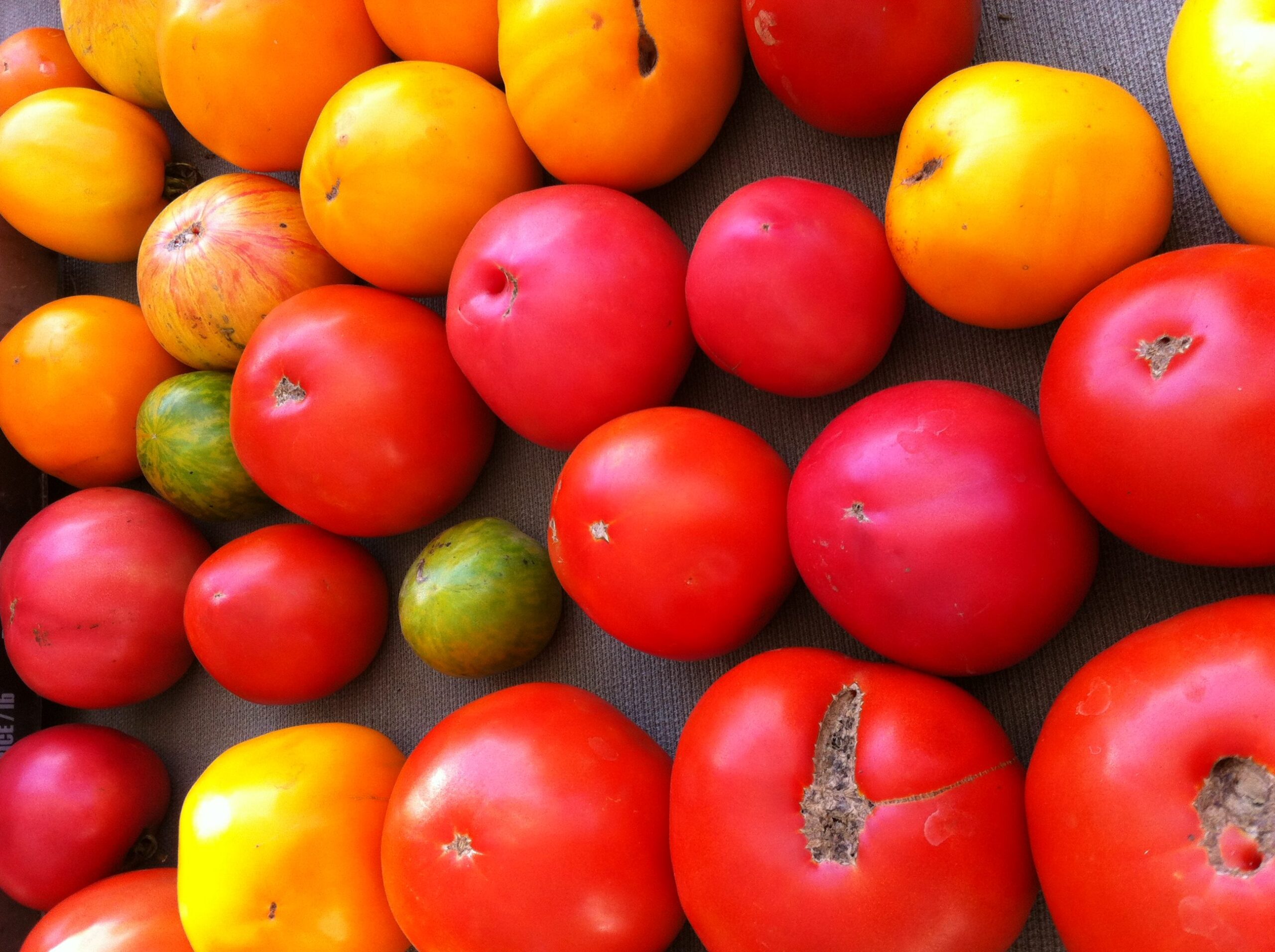SEED STORIES // Sharing origin stories from the OSSI Collection
The Dwarf Tomato Project is a cooperative breeding project initiated by Craig LeHoullier and Patrina Nuske-Small with the goal of creating delicious tomatoes of all flavor and size variations on compact, easy-to-maintain dwarf tomato plants.The Dwarf Tomato Project has been going (and growing) for over 10 years, with growers participating all around the world.
The Beginning
The project grew out of a comment made in a Tomato Forum at GardenWeb, in which Craig LeHoullier lamented the fact that the dwarf category in tomatoes was very restricted. He suggested it would be good to cross dwarfs with heirlooms to remedy this situation and mentioned New Big Dwarf, a variety listed in a 1915 Isbell Seed Catalogue that was developed by crossing Dwarf Champion (known since the late 1800s) with the largest known tomato at that time, Ponderosa. Patrina thought this sounded like a fun thing to do and decided to have a go at crossing some dwarfs with heirlooms in her next summer season in Australia.
By the end of 2005, Patrina had successfully made 8 crosses and she and Craig decided to use this material to start a project where anyone could help grow the many generations that would be needed to stabilize new varieties. The goal was to create a selection of tastes, colors and sizes that would equal heirloom varieties, with plants having an advantage of being more compact and therefore more manageable. Volunteers were given the opportunity to name any new novel dwarf tomato type they discovered in appreciation for helping in the project.
In January 2006 the project was given a dedicated section in a new tomato forum by the site owner of Tomatoville which became a home for the project. Forum members signed up each season to help grow the many generations of each ‘family’ which is how we identified each cross using names taken from ‘Snow White and the Seven Dwarfs’ and inventing new names as needed. These were working names used for reporting results each season in the forum until the best tasting and performing varieties were selected and given names by the volunteers who discovered them.
 Community Driven and Delicious
Community Driven and Delicious
Each year further breeding added more ‘families’ as other people started having a go at cross pollinating heirlooms with dwarfs, or dwarfs with dwarfs. By 2017 the project had released 68 new dwarf varieties of various tomato colours, sizes and shapes, and after discovering the Open Source Seed Initiative (OSSI), and with agreement of project participants, ALL varieties were designated as OSSI varieties. This means that seeds are sold or shared with the following pledge:
The OSSI pledge – You have the freedom to use these OSSI- Pledged seeds in any way you choose. In return, you pledge not to restrict others’ use of these seeds or their derivatives by patents or other means, and to include this Pledge with any transfer of these seeds or their derivatives.
Forum members who have also contributed their crosses since 2006 are Bruce Bradshaw, Vince Lavello, Ray South, Lee Newman, Sherry Long, Soren Linnemann, and more recently Craig LeHoullier, so the dwarf category in tomatoes is expanding and will possibly grow exponentially going forward. At around half the size of regular tomato plants, the need is greater now than ever before with many people wanting to grow their own food yet often having limited space to do so. If you want the size, color, taste and texture of heirloom tomatoes on plants that are half as big, grow some varieties from the Dwarf Tomato Project!
To learn more about this project’s collaborators and information on how to buy dwarf tomato seeds, visit the Dwarf Tomato Project website. More information about the history of the project and about dwarf tomatoes can also be found on Craig LeHollier’s website.


Just what a dedicated back yard Brooklyn tomato grower needs!
An indertermanent which is not 12 feet long!
Here in Western Colorado these tomatoes were a mixed experience. They started well in the house. Once outdoors they struggled at first. Grand Junction is at high altitude and there is lots of dry wind. They were planted outdoors on Mother’s Day and didn’t start producing until August first. Of the 3 I chose, so far Sturt Desert Pea has been the least productive. Golden heart has been productive and a very pretty tomato, mild in flavor. Idaho Gem has been productive, has the best flavor and is large enough to make nice slices. Each year I have a theme for my tomatoes. I have done Russian, German, all yellow, all orange, as examples. This Dwarf theme has been interesting but maybe better for a different environment. Over all my years here Azoychka, a Russian yellow tomato, has been the most faithful, year after year.